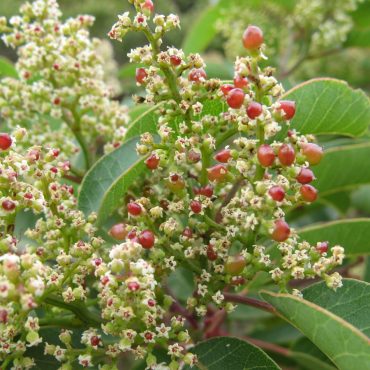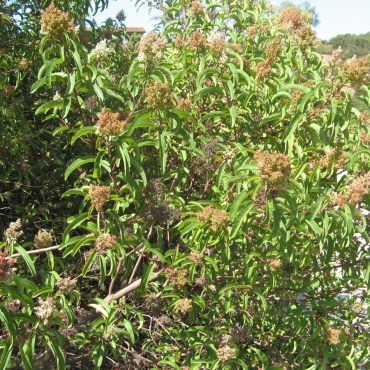Laurel sumac (Malosma laurina) is a large shrub that bears bright green foliage all year. Large clusters of cream flowers appear in the summer. The leaves tend to fold up along the midrib, especially during dry weather; this reduces exposure to the drying sun and gives laurel sumac its other common name – taco plant.
Laurel Sumac
Malosma laurina
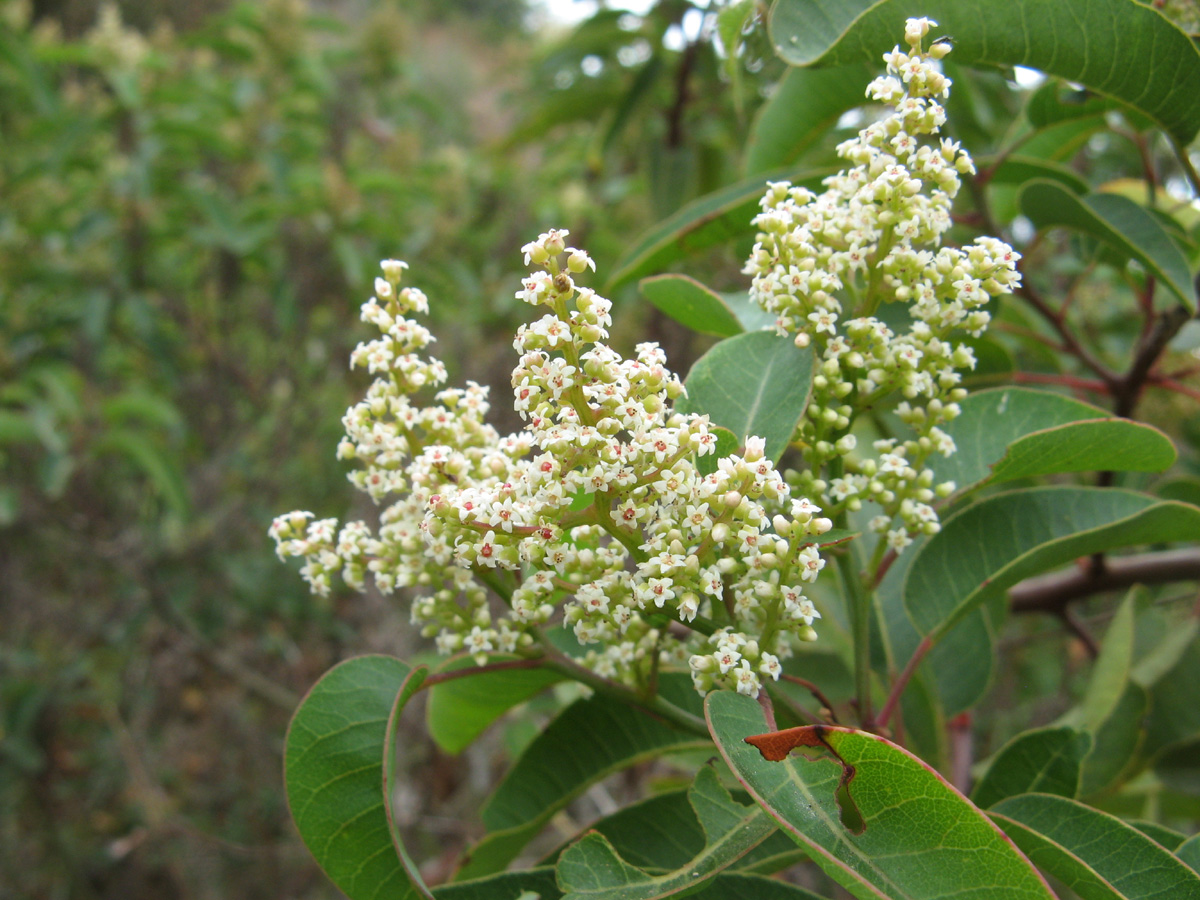
Other Common Names:
taco plant, California sumac
Description 2,4,23,27,39,59
Laurel sumac is an evergreen shrub or small tree, usually less than 15 feet (4.5 m) tall. It has a strong, pungent, green odor – neither sweet nor sage-like, but a bit like the much weaker odor of bush sunflower.
Leaves are generally 3-5 inches (7.5-12.5 cm) long, 2-3 inches (5-7.5 cm) wide, tapered to a point, with reddish midveins, petioles, and young twigs. New leaves are red-bronze in color. Leaf margins are smooth (not toothed). Leaves are more or less folded up along the midvein resembling a taco shell.
Flowers are small, 5/64-13/64 inches (2-5 mm) across and whitish, sometimes tinged with pink or green. Flowers are arranged in a terminal, multi-branched clusters, often pyramidal in shape, up to 8 inches (20 cm) in length. Although all flowers have male stamens and female pistils, only one sex or the other is functional. Some plants bear only functional male flowers; other plants bear fertile female flowers with occasional functional male flowers present. Flowers occur in June – July.1 Skeletal ghosts of old flower clusters persist for some time, giving a unique look to this species.
Fruits are small, about 1/10 inch (2.5-3 mm), and fleshy, enclosing a single seed. Fruits are red when young, aging to white.
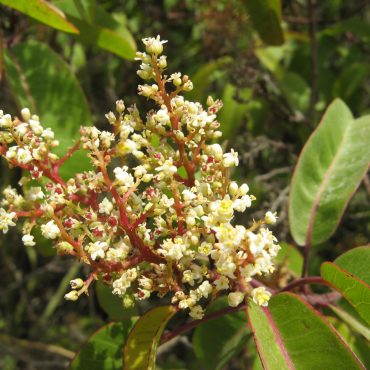

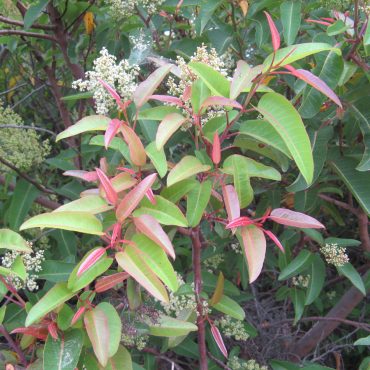
Distribution 5,7,8
Laurel sumac is native to southern California and Baja California. It is also found on the southern Channel Islands. It is common in chaparral and coastal sage scrub below 3300 feet (1000 m).
Laurel sumac is common in the Reserve, often occurring as isolated shrubs or small trees in the coastal sage scrub along the trails. Several large shrubs may be seen near the Santa Helena trailhead.
Learn more about plant vegetation types here
Classification 2,11,44
Laurel sumac is a dicot angiosperm in the sumac family, Anacardiaceae. Members of this family have small, five-petaled flowers, each of which produces one seed with a hard seed coat that is surrounded by fleshy tissue or some form of gelatinous coating (such a fruit is called a drupe).
Many members of the Anacardiaceae, such as poison oak and poison ivy, contain urushiol, which produce severe contact dermatitis. A few people have such a reaction to laurel sumac. Other members of the family, such as cashews and mangos are familiar food crops.
Laurel sumac is the only member of the Malosma genus to occur in the Reserve, but other family members are present, including the closely related lemonade berry (Rhus integrifolia) and poison oak (Toxicodendron diversiloba).
Alternate Scientific Names:
Rhus laurina
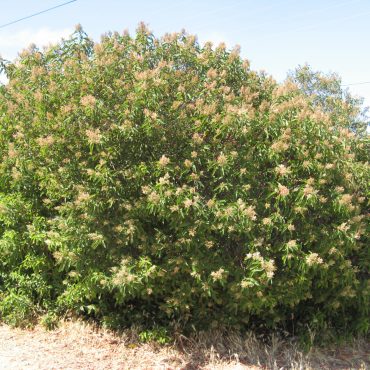
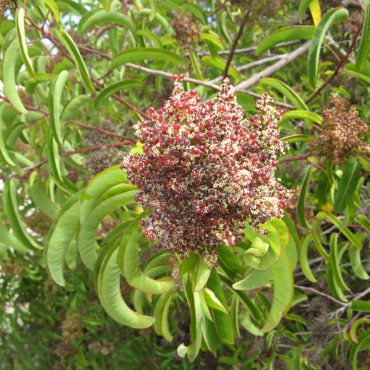

Ecology
Most evergreen shrubs of the coastal sage scrub and chaparral, reduce water loss through leaves with leaves that are small, thick and waxy.13,36 Leaves of laurel sumac are somewhat larger and thinner, and they fold up along the midrib,27 giving laurel sumac its other common name – taco plant. This folding reduces the surface to volume ratio as well as exposure to the drying sun,100 and simultaneous curling downward along the midvein may direct condensed moisture down toward the roots.59
Laurel sumac has a deep taproot; one extended more than 43 feet (13 m) into the ground.5,39 Thus, this plant can access deep groundwater and maintain its lush appearance throughout the summer, when most of the neighboring vegetation is dormant.
Laurel sumac is considered fire-adapted. It successfully resprouts after most fires,4,27 and seed sprouting is enhanced by heat.14
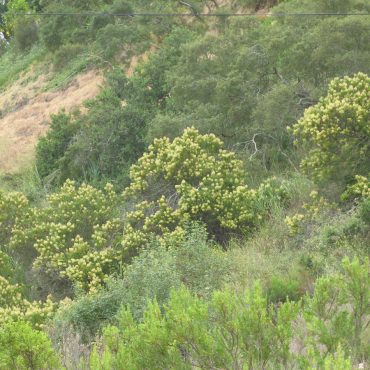
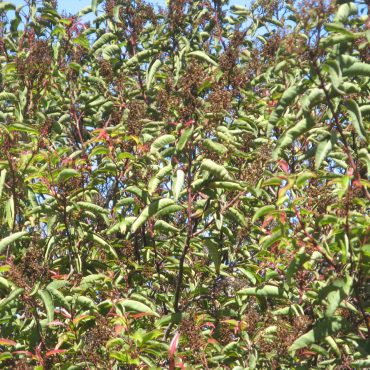
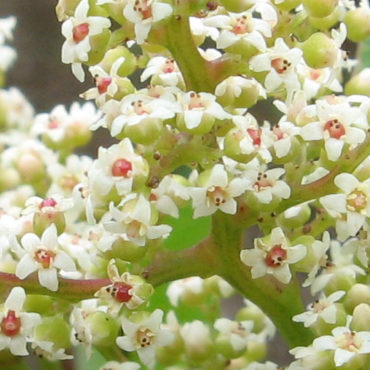
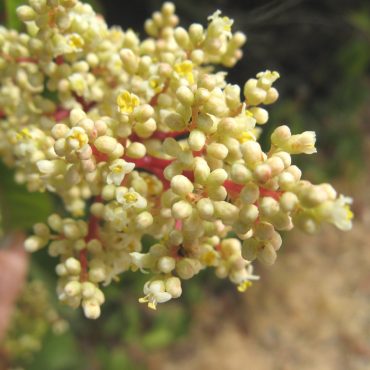
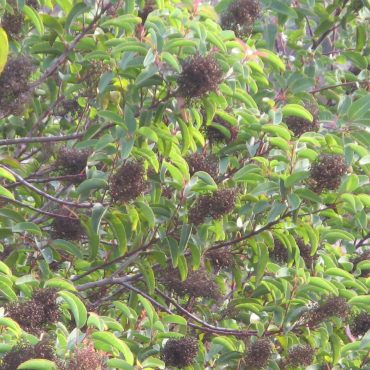
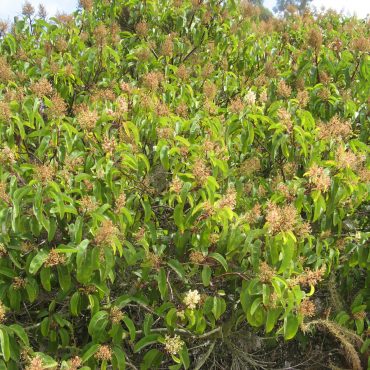
Interesting Facts
Laurel sumac does not tolerate freezing. Early farmers used the natural presence of laurel sumac as an indicator that the climate was frost-free and suitable for avocado and citrus.27,59
Some people are allergic to laurel sumac, developing an itchy skin rash after contact.8
The genus name, Malosma comes from the Latin words for “apple” and “odor”21 and refers to the strong aroma of the crushed leaves, somewhat between apple27 and bitter almond.21
